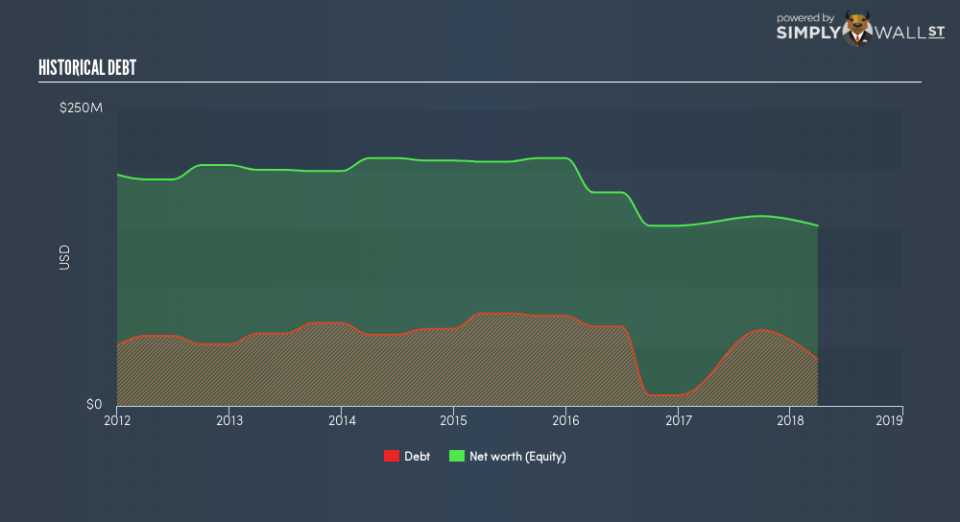What does Rubicon Limited’s (NZSE:RBC) Balance Sheet Tell Us About Its Future?

While small-cap stocks, such as Rubicon Limited (NZSE:RBC) with its market cap of NZ$122m, are popular for their explosive growth, investors should also be aware of their balance sheet to judge whether the company can survive a downturn. Assessing first and foremost the financial health is vital, since poor capital management may bring about bankruptcies, which occur at a higher rate for small-caps. I believe these basic checks tell most of the story you need to know. However, since I only look at basic financial figures, I’d encourage you to dig deeper yourself into RBC here.
How does RBC’s operating cash flow stack up against its debt?
RBC’s debt levels surged from US$9m to US$39m over the last 12 months – this includes both the current and long-term debt. With this increase in debt, RBC currently has US$23m remaining in cash and short-term investments , ready to deploy into the business. Moreover, RBC has produced US$8m in operating cash flow over the same time period, leading to an operating cash to total debt ratio of 21%, signalling that RBC’s operating cash is sufficient to cover its debt. This ratio can also be interpreted as a measure of efficiency as an alternative to return on assets. In RBC’s case, it is able to generate 0.21x cash from its debt capital.
Can RBC meet its short-term obligations with the cash in hand?
Looking at RBC’s most recent US$36m liabilities, it appears that the company has been able to meet these obligations given the level of current assets of US$64m, with a current ratio of 1.78x. For Forestry companies, this ratio is within a sensible range as there’s enough of a cash buffer without holding too much capital in low return investments.
Is RBC’s debt level acceptable?
RBC’s level of debt is appropriate relative to its total equity, at 26%. This range is considered safe as RBC is not taking on too much debt obligation, which may be constraining for future growth. We can test if RBC’s debt levels are sustainable by measuring interest payments against earnings of a company. Ideally, earnings before interest and tax (EBIT) should cover net interest by at least three times. For RBC, the ratio
Next Steps:
RBC’s low debt is also met with low coverage. This indicates room for improvement as its cash flow covers less than a quarter of its borrowings, which means its operating efficiency could be better. However, the company will be able to pay all of its upcoming liabilities from its current short-term assets. This is only a rough assessment of financial health, and I’m sure RBC has company-specific issues impacting its capital structure decisions. I suggest you continue to research Rubicon to get a more holistic view of the stock by looking at:
Future Outlook: What are well-informed industry analysts predicting for RBC’s future growth? Take a look at our free research report of analyst consensus for RBC’s outlook.
Historical Performance: What has RBC’s returns been like over the past? Go into more detail in the past track record analysis and take a look at the free visual representations of our analysis for more clarity.
Other High-Performing Stocks: Are there other stocks that provide better prospects with proven track records? Explore our free list of these great stocks here.
To help readers see past the short term volatility of the financial market, we aim to bring you a long-term focused research analysis purely driven by fundamental data. Note that our analysis does not factor in the latest price-sensitive company announcements.
The author is an independent contributor and at the time of publication had no position in the stocks mentioned. For errors that warrant correction please contact the editor at editorial-team@simplywallst.com.

 Yahoo Finance
Yahoo Finance 
